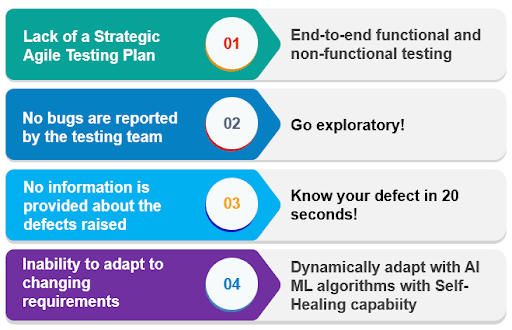
Developers make the code – to build the application. Testers break the code – to test the application and ensure its defect free. The Development and QA teams may seem two different teams on two different paths. However, the end goal of both teams is the same – a quality product that satisfies the customer.
Organizations nowadays are pivoting towards Agile DevOps delivery resulting in the developer-tester silos being shattered in the software development process. The organizations are also intending to reduce the cost of testing without impacting application quality. With the need of rapidly shipping new features in time-boxed sprints, there is an ongoing thought-provoking trend of making the developers perform testing. This is called the Developer-based testing or Development testing.
The main role of a developer is to code new features or enhancements as per the requirements. However, it is also also important to ensure that the new code does not give rise to any defects when integrated with existing functionality of the application. So testing the code as soon as it is developed ensures quicker defect identification.
Currently, most of the developers perform unit testing, and few code-based tests to ensure that the particular unit of the application meets its design requirements and behaves as intended. Developers take the common approaches to write these tests – either Test Driven Development (TDD) or Behavior Driven Development (BDD).
Should developers test their own code?
Yes, because this is a good thing as it expedites the process of exposing and fixing coding errors. It helps in reducing uncertainty in a unit. However, any additional testing responsibility put on them may take away the coding time that they are pro at and lead to decreased coding productivity.
A chef may whip up exotic dishes with exotic ingredients, but unless the consumers are satisfied, it wouldn’t matter. Same goes for an application. A developer may perfectly write a zero-error-code as per the requirement. But what if a page loads a few seconds late due to performance and load issues? What if there are security issues? “Our code is error-free’ will not come to the rescue and help you save face!
Development testing aims to eliminate coding errors before the code is passed on to the QA team. A developer focuses on a particular requirement or rather one part of the application and may not have a bird’s eye view of the entire application’s working or additional features being developed by other developers. A product that has good functionalities would still lose its face value if it’s not user-centric.
QA-based testing focuses on the holistic approach and covers the full spectrum of testing like Security Testing, Performance and Load Testing required to discover a host of issues that would otherwise go unnoticed until production.
A perfect blend of both Developer-based and QA-based testing would ensure easy defect identification along with quality feature release. Hence, equal focus needs to be given on functional testing as well as non-functional testing that will help in bridging the gaps between business logic and user experience.
Now that we have settled the Developer/QA based testing controversy, let’s get into the head of how a developer thinks and bust the typical stereotypes.
Does the development team think ‘QA does not provide any value?

If yes, it’s time to rethink your testing strategies. Following are the 4 major challenges faced by developers, and effective ways to resolve them..


Quality comes when you have proper defect triaging/reporting. Webomates shares real-time test results for every regression cycle getting executed through the CQ portal. The test results are available in the form of summaries and screenshots. Need a better way to help a developer? Provide them with a 20-second video that helps the developers to immediately understand the defect and fix it.

Not reviewing code, or suppressing errors are also some of the means that developers use to save time and meet deadlines.
Webomates believes that following a formal quality assurance process is imperative for a successful release. Along with ensuring effective communication and collaboration between developers and QA teams within defined SLA, Webomates QA team reaches out to developers with the Webomates Quality Quotient matrix where “x % is valid defects, y % invalid defects”. Webomates ensure that its quality quotient is always less than 10%.
Accelerate your Testing Journey with Webomates and provide your developers an opportunity to resolve high-risk issues before users ever encounter them.
Along with shifting left the testing process, our QA team embeds intelligent automation and continuous testing principles right across the software delivery pipeline.
With a perfect blend of Agile, DevOps, patented AI Defect Predictor tool and a test automation framework, Webomates can help you achieve a hassle-free release, every time!
Test Smarter, Not Harder: Get Your Free Trial Today!
Start Free Trial
Leave a Reply